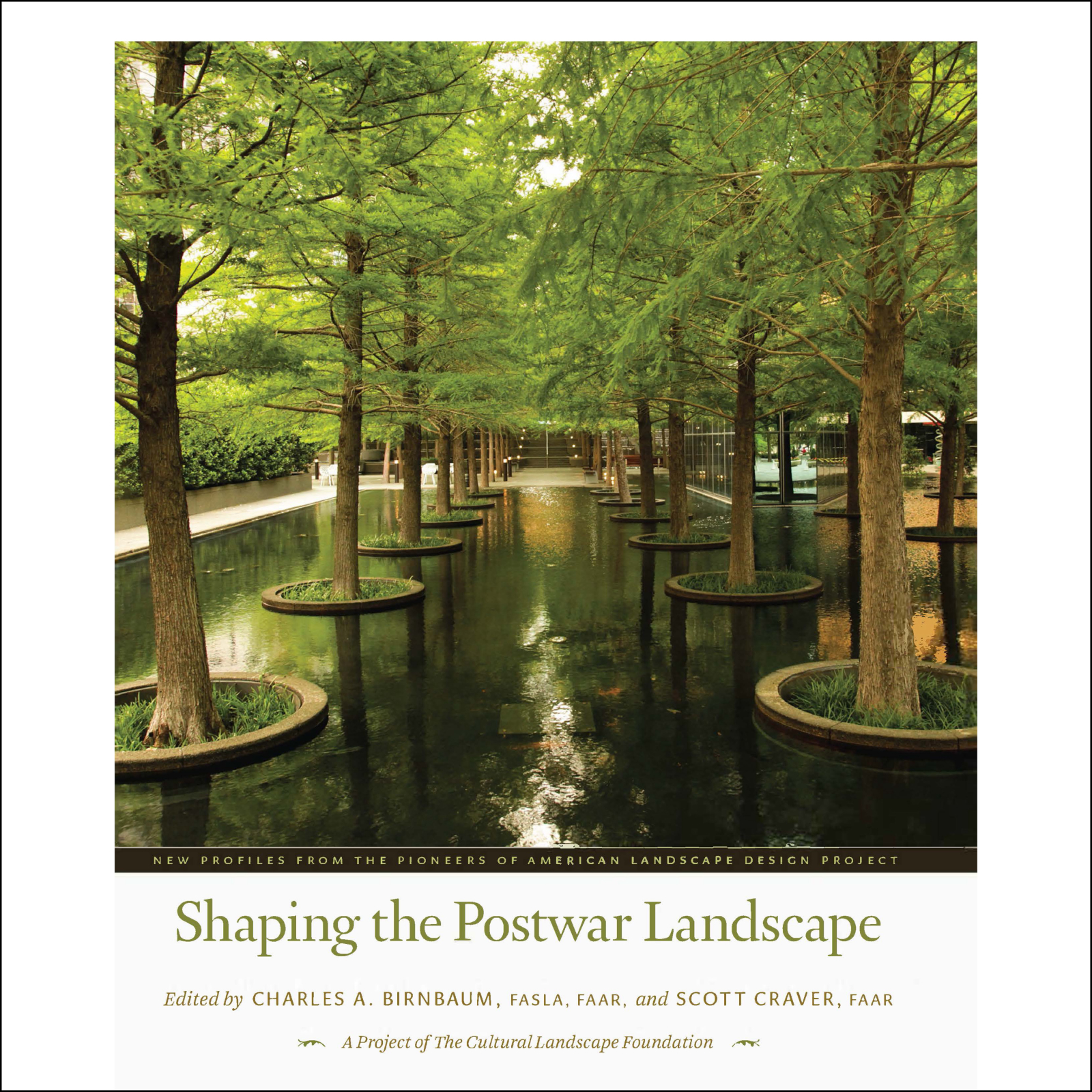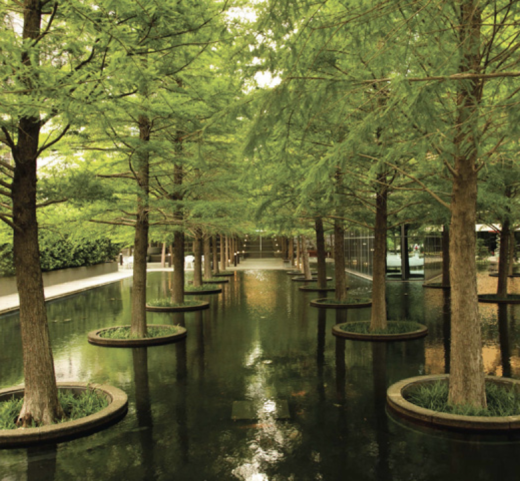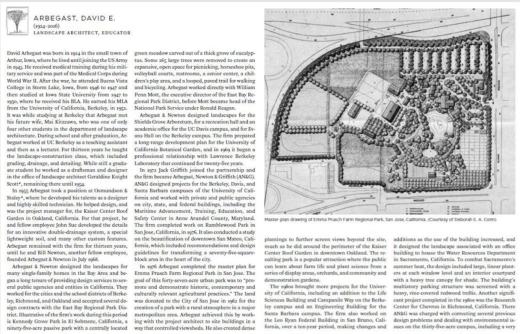Shaping the Post-War Landscape
Edited by Charles A. Birnbaum, FASLA, FAAR and Scott Craver, FAAR
Reviewed by Meredith Arms Bzdak, PhD, Partner, Mills + Schnoering Architects, LLC
The new publication Shaping the Post-War Landscape represents a significant contribution to the body of literature on landscape architecture and to the scholarly writings on design of the Modern era in general.
The body of information on the design leaders, the special terminology, and the conservation issues that characterize landscape architecture is still relatively small. As an advocacy and education organization with the goal of connecting people to places, The Cultural Landscape Foundation (TCLF) has been working diligently to change this. Their ongoing Pioneers of American Landscape series, of which this new book is a part, has filled a substantial void. Shaping the Postwar Landscape offers over forty years of perspective on the topic, shining the spotlight on a range of practitioners who have designed the landscape environments in which we live.
The book’s editors, Charles Birnbaum and Scott Craver, note that the publication “does not attempt to give an exhaustive account of modernist landscape architecture in America, but rather a representative one.” The pioneers they have selected to include do in fact demonstrate that the work being completed by landscape architects at mid-century was diverse and multi-faceted, from vest-pocket parks to playgrounds to shopping malls, and was indeed a true reflection of the growing complexity of the country’s business and leisure activities in the postwar years.


